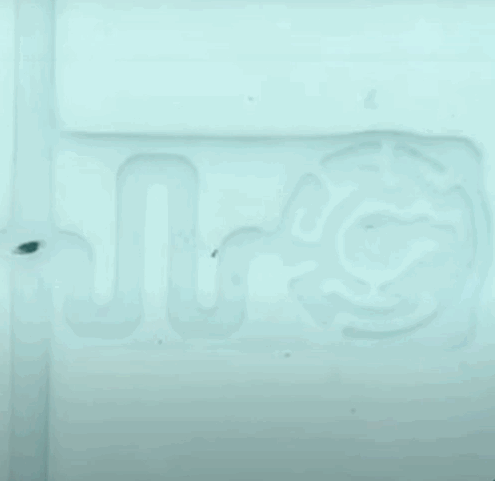Scientists have created a robot that can transform from a black glob into a swarm of tiny beads and back again.
The inventors say that the robot's ability to split itself into many pieces and then snap back together makes it potentially useful for drug delivery.
The human body is full of winding, narrow passages and near impenetrable barriers, too restrictive for any robot visible to the naked eye to venture into. Micro-scale robots are where it's at, being small enough to squeeze into any tiny space.
Unfortunately, their tiny scale comes at the cost of a reduced capacity to carry enough materials to meet the needs of treating entire diseased organs.
A shape-shifting robot could overcome this issue by transforming into a swarm and then recombining once it has reached its final destination.
In a recent study, a team of international scientists constructed a robot from 'ferrofluid', a suspension of iron oxide and hydrocarbon oil.
They used rotating, spherical magnets to apply force on the substance so it would tear itself into many pieces or elongate itself to move through tight passageways.
To demonstrate the potential usefulness of the robot in traversing the arteries and capillaries of the human body, the researchers constructed a maze with large and narrow sections.
By splitting the robot into a swarm, it could reach the end of the maze successfully.

The main obstacle to using this invention in biomedical applications is the magnetic control system, which would need to be strong enough to penetrate human tissue, the researchers say.
Over the past decade, researchers have increasingly applied the emerging technology of magnetically-controlled miniature robotics to human healthcare. The next big leap in the field is making the bodies of tiny bots out of something far softer and much more malleable.
Previous research has shown that these types of robots can pass through confined spaces inside the human body, such as tissue gaps and blood vessel branches, to deliver cargo with cell-level precision and perform micro-manipulations, the researchers say.
Recently, the attention has moved to soft miniature robots made of fluids, gels, and elastomers as they are much more flexible than robots made from rigid materials, the researchers say.
This paper was published in Science Advances.
